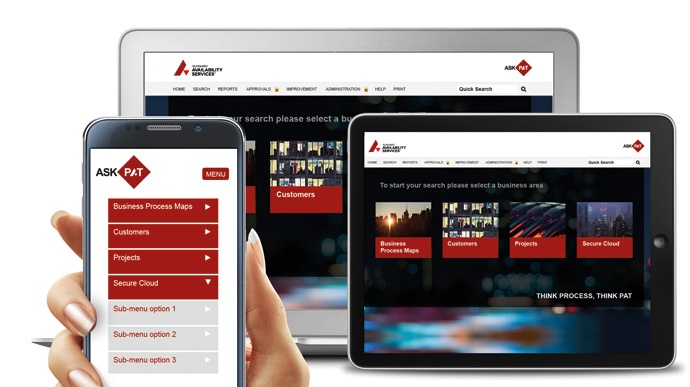If you’ve been tasked with researching any potential software vendor, it’s likely that you’ve taken one of two purchasing routes - Request for Proposal (RFP) or competitive analysis - to determine which software solution will be the best option for your organisation.
But, before you get to this stage, you must first outline what you are looking to achieve and decide on your strategic goals and objectives. Make a list of your requirements for the new system before you research the market. It is essential that this crucial step is carried out as it will ensure that you choose the BPM system that best fits the needs of the business.
To learn more about what you should be looking for in a BPM system, read our article: 7 key questions to ask when shopping for a Business Process Management system
Many companies are required by policy to use an RFP process when investing in a new software system. In this article, we’ll explore both RFP and competitive analysis purchasing routes and weigh up the pros and cons of each.

What is a Request for Proposal (RFP)?
A request for proposal is the method by which a company looking to procure a commodity or service, may request business proposals from a number of potential suppliers. In most cases the RFP will outline the main requirements for the software system as determined by the business need. In the simplest of terms, an RFP is used to inform suppliers that a company is looking to procure a product or service and encourages them to put forward a business proposal in order to be awarded tender.
What are the benefits or pros of using an RFP for procurement of a BPM system?
The main benefit of using an RFP for procurement of a new BPM system is that you won’t need to spend your time researching potential suppliers. Sending out an RFP can save you time therefore, however you will need to do a really good job outlining exactly what you are looking for, in order to get the best responses.
Some other benefits include:
- Identifies new suppliers or systems that you may not be aware of
- Supports and provides evidence of a fair selection process
- Encourages existing suppliers to improve their products or services to keep the business
- Helps to keep the project on track by being clear on what is required, how it will be delivered and by what deadline
What are the cons of using an RFP for procurement of a BPM system?

As mentioned above, it takes a lot of time and effort to prepare an effective RFP document and organise the process by which you will narrow the field and keep potential suppliers updated along the way. However the biggest downside to using an RFP to decide on your new BPM system is that many suppliers have realised that the time and effort required to respond with their business proposal is rarely worth their investment as it’s likely that many organisations will have already lined up a preferred supplier or BPM system. If this is the case, you might not receive responses from suppliers who could be a better fit for your business.
Other limitations include:
- The RFP purchasing process takes a long time and is likely to use up more resource than choosing a preferred supplier
- The process may involve multiple departments, which could affect the estimated time of completion
- The process requires multiple meetings, presentations, follow ups etc depending on the number of responses you receive
- There is a risk that the information requested by the client and the responses provided by the supplier could be misinterpreted. Especially if a points system has been used
What is Competitive Analysis?
Competitive analysis is the method by which companies looking to invest in a new software system research a number of potential preferred suppliers and compare and assess their strengths and weaknesses. As with submitting an RFP, you must understand what your requirements are for the BPM system you wish to invest in.
What are the Benefits or Pros of Competitive Analysis for Procurement of a BPM System?
The biggest benefit of undertaking competitive analysis is that you can conduct your own research, and draw up a shortlist of your preferred suppliers or systems before investigating them further. This means that you can ensure that the systems will meet your requirements rather than having to go through multiple proposals from suppliers that are not likely to be a good fit.
Some other benefits include:
- A lot of the information that you’ll need is readily available online and you can do a great deal of research without having to contact the supplier directly
- You can easily and quickly narrow down the system you want to consider then concentrate time on those final few to get the best fit for your company
- There will be no need to review 10 responses and manage the process with multiple suppliers
What are the Cons of Competitive Analysis for Procurement of a BPM System?
As with using an RFP, the biggest drawback is the time it takes to conduct your initial research, although taking a competitive analysis approach will take significantly less time than an RFP process. It is also essential to narrow down the systems you are considering in line with your requirements, otherwise you could miss a potential good fit.
Other limitations include:
- There is the potential to become biased towards a particular supplier or system, which may not be best fit for the business need
- Having a preference for a system or supplier may cause you to change your goals and objectives in line with the offering, which could have a detrimental effect on the project
Purchasing a Business Process Management System with Triaster

We hope that you have found this article helpful. Here at Triaster we offer a dedicated Business Process Management system that intelligently houses all of your company’s processes, procedures, policies and documentation in an easy to understand, easy to use, secure website.
We work on a requirements-driven sales process which aims to align seamlessly with your strategic business goals and objectives. Therefore we prefer not to respond to an RFP and instead spend the time engaging with the client directly to understand their unique business challenges and requirements for a system that best fits their needs.
If you are interested in exploring how Triaster can help you with your business process management and improvement challenges, we would love to hear from you.
Related articles:
5 Reasons your Business needs Business Process Management
5 More Reasons your Business needs Business Process Management
How to Cost a Business Process Management (BPM) system
7 Key Questions to ask when shopping for Business Process Management (BPM) software
Written by Jo Dolton
Jo joined Triaster in 2003 and quickly became every customer's champion. If she is concerned for any reason that a customer might not be having the best possible experience, she will work tirelessly to ensure that they do. She left Triaster in September 2018 to work closer to home.

